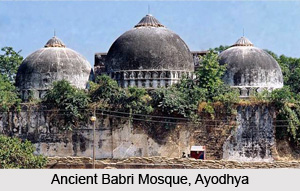 Archaeological sites in Uttar Pradesh comprise the ancient ruins of various historical monuments and remains of interesting relics which have been discovered from numerable areas of this North-Indian state. Such remnants suggest the existence of a thriving civilization which survived from the Palaeolithic Age to the Modern Age. The archaeological ruins dug out from different portions of Uttar Pradesh mirror the traditions, customs, art and commercial activities which flourished in these parts of the country since prehistoric times. Archaeologists are of the view that these sites existed since much above the last 100 years. The State Archaeological Directorate and the Archaeological Survey of India or ASI has been ensured the responsibility of preserving and protecting the archaeological sites in Uttar Pradesh. Ancient remnants at Kalpi, the archaeological region of Ayodhya, Fatehpur Sikri, Pratisthan Pur or `Jhunsi` are some of the most famous archaeological sites based here.
Archaeological sites in Uttar Pradesh comprise the ancient ruins of various historical monuments and remains of interesting relics which have been discovered from numerable areas of this North-Indian state. Such remnants suggest the existence of a thriving civilization which survived from the Palaeolithic Age to the Modern Age. The archaeological ruins dug out from different portions of Uttar Pradesh mirror the traditions, customs, art and commercial activities which flourished in these parts of the country since prehistoric times. Archaeologists are of the view that these sites existed since much above the last 100 years. The State Archaeological Directorate and the Archaeological Survey of India or ASI has been ensured the responsibility of preserving and protecting the archaeological sites in Uttar Pradesh. Ancient remnants at Kalpi, the archaeological region of Ayodhya, Fatehpur Sikri, Pratisthan Pur or `Jhunsi` are some of the most famous archaeological sites based here.
Archaeological Site of Ayodhya
A majority of the archaeological relics are existent around the region surrounding the Babri Mosque, and they are all situated in the city of Ayodhya. Numerous excavations carried out here have brought to light a wide range of relics including terracotta idols of female deities, pieces of votive tanks, wheels, glass and terracotta beads, North Black Polished Ware or NBPW belonging to 1000 BC till 300 BC, terracotta figurines of mother Goddess and animals, brick structures belonging to the Sunga age or 200 BC, etc. Ceramics of red-ware, fragments of bangles of the Kushana period dating between 100 to 300 AD, copper coins, potsherds, brick shrines, terracotta figurines of the Gupta Age which thrived from 400 to 600 AD and a large structure measuring 50 metres in length belonging to the 11th to the 12th century have also been unearthed. The controversial Babri Mosque is also located here, whose walls bear Sanskrit inscriptions.
 Archaeological Site at Kalpi
Archaeological Site at Kalpi
Kalpi city is located in Jalaun District in Uttar Pradesh on the right bank of Yamuna River and it was previously referred to as `Kalak Dev Ki Kalpi` during ancient ages, and later it was known as `Kalpi`. King Vasudeva is believed to have been established during the 4th century. There existed a mint utilized for the coinage of copper at Kalpi during the regime of the Mughal emperor Akbar. Ruins of a fort are present on the banks of Yamuna River at Kalpi. A modern town is also present near this river which is adorned with manifestations of the wars mentioned in Ramayana.
Archaeological Site of Pratisthanpur or Jhunsi
Also referred to as `Pratisthan Puram`, Pratisthanpur is currently a part of Jhunsi in Allahabad and is the royal capital of Lunar Dynasty. Archaeological excavations conducted here have produced a carbon 14 which date back to 71 BC for Neolithic levels. It is believed that this region was burnt by the foreign invaders during 13th to 14th century and it began to be called `Jhulsi` which is a Hindi term implying `burnt`. Pre-Northern Polished Ware or NBP Ware belonging to the Gupta Age dating around 700 BC to 200 BC bear testimony to a thriving population which settled at this part of the country. High mounds of Jhunsi present sights of old Pratisthana and they are situated on the banks of Ganga River. However, the constant corrosive actions of Ganga are leading to the destruction of the rare relics found here, according to a research conducted by Indian National Trust for Art and Cultural Heritage or INTACH.
Archaeological Site of Jajmau
Also known as `Jajesmow`, Jajmau is an isolated suburb belonging to Kanpur and is located on the banks of Ganga River. Ancient pottery, historical objects and tools have been discovered by the Archaeological Survey of India or ASI. Currently they are preserved in the Kanpur Sangrahalaya. The historical artefacts uncovered from this region have revealed that they belong to the period around 1300 to 1200 BCE.
Uttar Pradesh boasts of several other archaeological sites which consist of Bargaon, Fatehpur Sikri and Sauripura or Dvaraka.



















